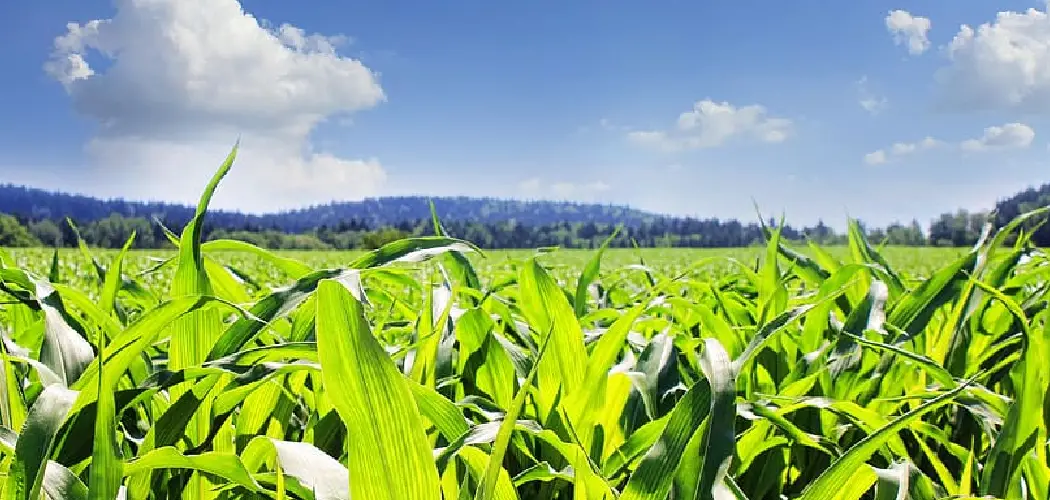Growing fodder can be a sustainable and cost-effective way to feed livestock, providing fresh greens packed with essential nutrients. This age-old practice has seen a resurgence among small-scale and organic farmers, as well as hobbyists looking to take control of their animal feed quality. Through the simple process of germinating seeds, fodder can be cultivated in any controlled environment, requiring minimal space and resources. In this guide on how to grow fodder, we’ll explore the steps necessary to establish your own fodder system, the types of seeds to use, and tips to ensure a healthy yield.
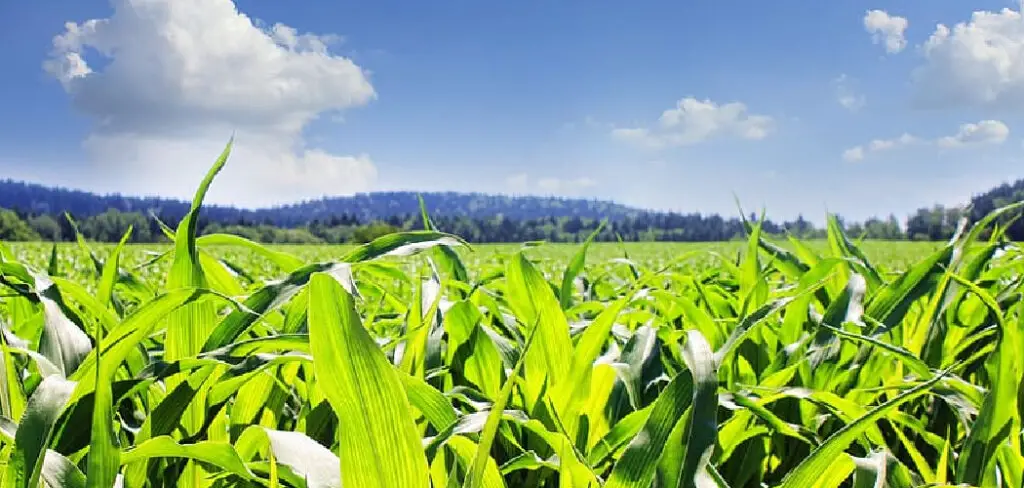
What is Fodder?
Fodder refers to feed that is given to livestock, typically consisting of grasses, grains, and legumes. It is an important source of nutrition for animals, providing a balanced diet that promotes growth and reproduction. Fodder can be provided in various forms such as hay, silage, and sprouted grains. Sprouted grain fodder offers the added benefit of live enzymes and increased digestibility, making it a highly valuable option for livestock owners. The sprouting process also increases the nutritional value of the grains, making them more nutrient-dense compared to unsprouted grains.
The Benefits of Growing Fodder
The benefits of growing fodder go beyond just providing your livestock with fresh greens. Here are some additional reasons why you should consider incorporating this practice into your farm or homestead:
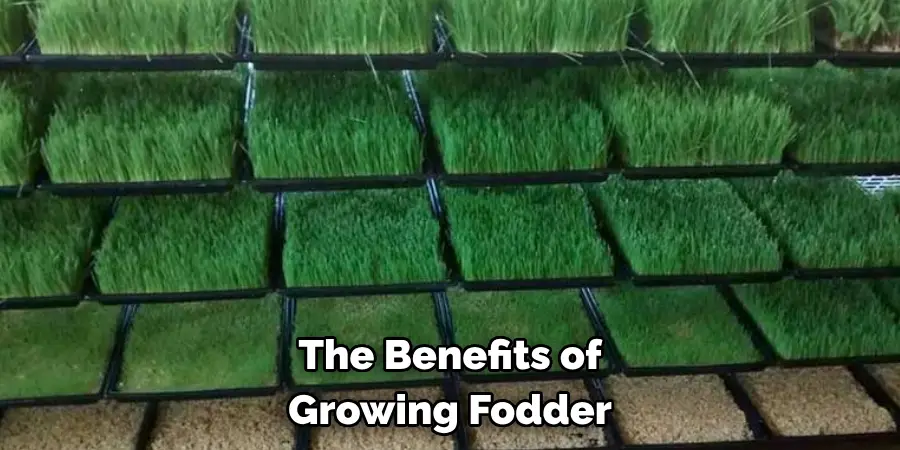
Cost-Effective
Growing fodder is a cost-effective way to provide your animals with high-quality feed. The seeds used for fodder are typically less expensive than purchasing hay or other types of animal feed, and the yield can be significantly higher.
Nutrient-Rich:
Fodder is packed with essential nutrients that promote better health in livestock. These include vitamins A, B, C, and E, as well as minerals such as magnesium, calcium, and potassium. Freshly grown fodder also contains high levels of protein and fiber.
Increased Digestibility:
The sprouting process used to grow fodder increases its digestibility for animals. This means that they can better absorb the nutrients from the feed, resulting in healthier and more productive livestock.
Sustainability:
Growing fodder is a sustainable practice that can reduce your farm’s carbon footprint. By producing your own feed, you are decreasing the need for transportation and packaging of commercial animal feed, which contributes to greenhouse gas emissions.

Things You’ll Need
Seeds:
The most common seeds used for growing fodder include wheat, barley, oats, and alfalfa. It’s essential to source high-quality, organic seeds for the best results.
Containers O Trays:
You can use a variety of containers or trays to grow your fodder, such as plastic storage bins, nursery flats, or even repurposed egg cartons.
Water Source:
A reliable water source is vital for growing healthy fodder. Make sure you have easy access to water and consider using a timer for automated watering.
Growing Medium:
Fodder can be grown in a variety of mediums, such as soil or hydroponically. If using soil, make sure it is well-draining and free from pesticides or other harmful chemicals.
Growing Space:
You’ll need a controlled environment with adequate space to set up your fodder system. This could be a greenhouse, shed, spare room, or even an outdoor area covered by shade cloth.
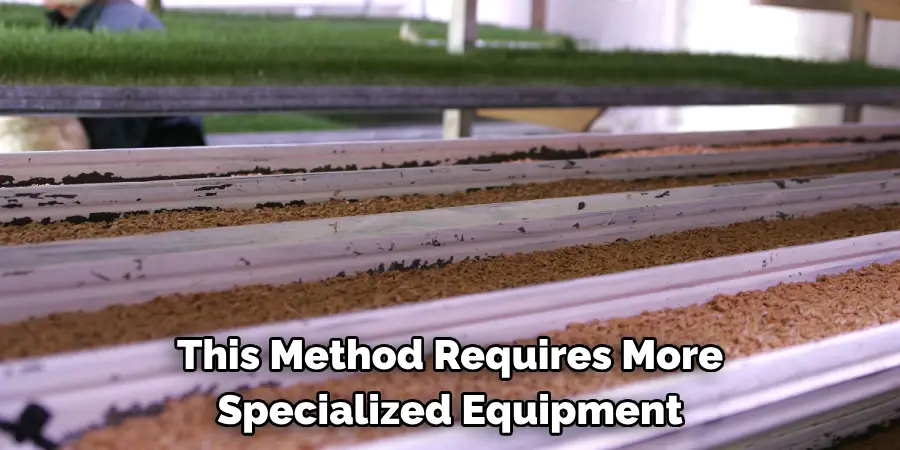
9 Step-by-step Guidelines on How to Grow Fodder
Step 1: Choosing the Right Fodder Crops
The first step in growing fodder is selecting the right type of seeds to use. As mentioned earlier, the most common types of seeds used for fodder are wheat, barley, oats, and alfalfa. However, there are a few things to consider when choosing your fodder crops:
Climate:
Consider the climate and weather conditions in your area. Some crops may grow better in certain climates, so it’s essential to research which types of seeds will thrive in your location.
Livestock Needs:
Different types of animals have different nutritional needs. For example, dairy cows may require a higher protein content in their feed compared to chickens or goats. Research which type of fodder crops are best suited for your particular livestock.
Availability:
Some types of seeds may be more readily available in your area than others. Consider sourcing seeds from local farmers or suppliers to support your community.
Step 2: Setting Up a Fodder Growing System
Once you’ve selected your seeds, it’s time to set up a fodder-growing system. This can be done in a variety of ways, depending on the resources and space available to you.
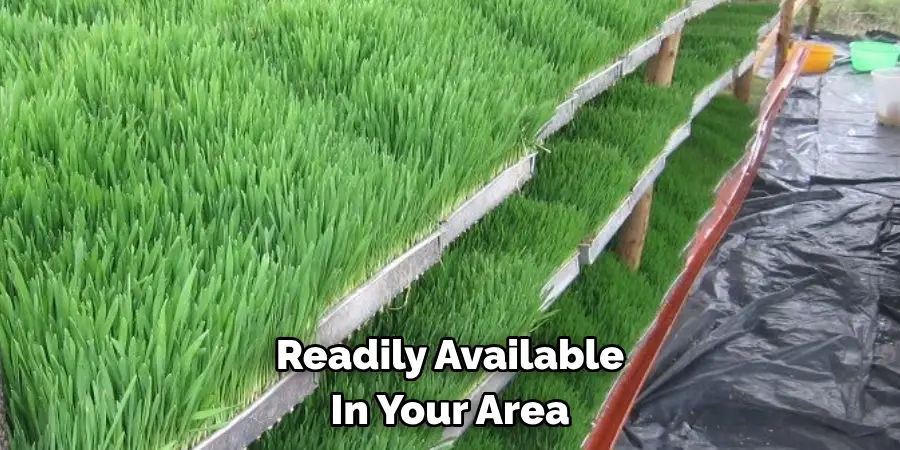
Soil-Based System:
In this method, seeds are planted directly into soil-filled containers or trays. The soil should be moist but not waterlogged, and the seeds should be spread evenly with minimal overlapping.
Hydroponics System:
In this system, seeds are germinated and grown without soil, using a water-based nutrient solution. This method requires more specialized equipment but can result in higher yields and faster growth.
Step 3: Growing Fodder Hydroponically
If you’re using a hydroponics system, follow these steps:
Pre-Soaking:
Soak your chosen seeds in water for 12-24 hours before planting.
Germination:
Place the soaked seeds on a tray lined with a paper towel or moist substrate. Cover the tray with another layer of paper towel and mist daily to keep it moist.
Planting:
After 3-4 days, once the seeds have begun to sprout, plant them in your hydroponics system according to the manufacturer’s instructions. Keep the growing medium moist and monitor for any signs of mold or disease.
Step 4: Growing Fodder in Trays or Containers
If you’re using a soil-based system, follow these steps:
Pre-Soaking:
Soak your chosen seeds in water for 12-24 hours before planting.
Planting:
Fill your containers or trays with moist, well-draining soil. Spread the soaked seeds evenly on top of the soil and cover them with another thin layer of soil. Mist the soil daily to keep it moist.
Germination:
After 3-4 days, once the seeds have begun to sprout, remove the top layer of soil and place your trays in a sunny spot. Continue to mist daily and monitor for any signs of mold or disease.
Step 5: Sprouting Fodder for Livestock
Once your seeds have sprouted, they are considered fodder and can be fed to your animals. Here are a few tips for proper feeding:
Harvesting:
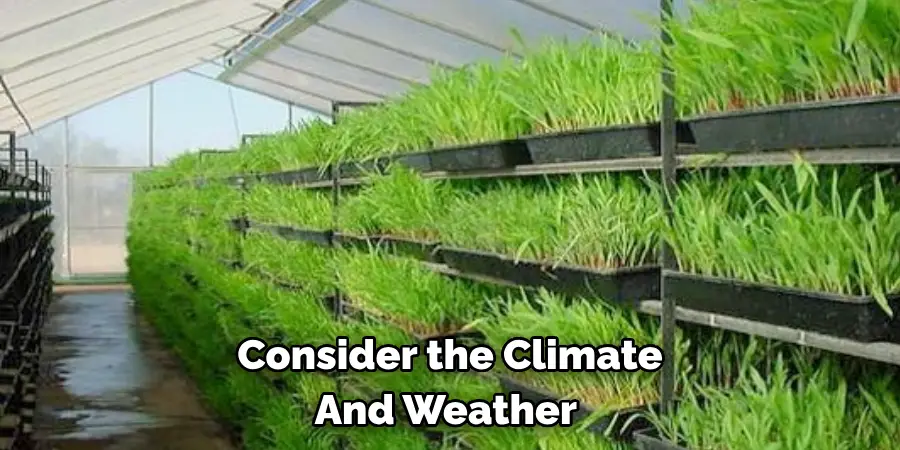
Harvest the fodder when it is about 6-8 inches tall or when the majority of the seeds have germinated. Cut off the roots and any moldy portions before feeding.
Feeding Frequency:
The frequency of feeding fodder to your animals will depend on their particular nutritional needs and the type of fodder you are growing. In general, it is recommended to feed fodder at least once a day.
Introducing Fodder into Your Livestock’s Diet:
It’s important to introduce fodder gradually into your animals’ diet. Start by mixing small amounts with their regular feed, and gradually increase the amount over a few days to allow them to adjust.
Step 6: Managing Watering and Irrigation
Proper watering is essential for growing healthy fodder. Here are a few tips:
Watering Frequency:
Water your fodder daily, or as often as needed to keep the growing medium moist but not waterlogged.
Automated Watering:
Consider using a timer or irrigation system to automate watering and ensure consistent moisture levels. This is especially useful for larger systems or when you may be away from your fodder for extended periods.
Step 7: Harvesting and Storing Fodder
Harvested fodder can be stored for up to two days in the refrigerator before feeding it to your animals. To extend its shelf life, consider drying or freezing the fodder. You can also store un-sprouted seeds for future use. It’s important to keep harvested fodder in a cool, dry place to prevent mold growth. But always check for any signs of spoilage before feeding to your animals. The fresher the fodder, the more nutritious it will be for your animals.
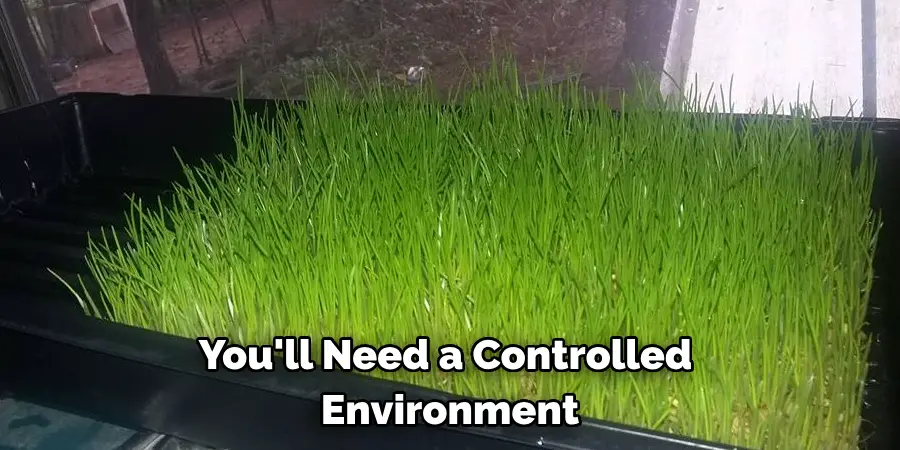
Step 8: Monitoring Livestock Health and Adjusting Fodder Intake
As with any changes to your animals’ diet, it’s important to monitor their health and adjust the amount of fodder accordingly. Keep an eye out for any digestive issues or weight changes and consult with a veterinarian if necessary. The amount of fodder needed may also vary depending on the season and your animals’ activity levels. Adjust accordingly to ensure they are getting the proper nutrition from their fodder. It’s also important to regularly clean and sanitize your fodder growing system to prevent the buildup of bacteria or mold.
Step 9: Raising Healthy Animals with Fodder
In addition to being a cost-effective and sustainable option for feeding livestock, growing fodder can also lead to healthier and more productive animals. The high concentration of nutrients in fresh fodder can improve the overall health and immune function of your animals, resulting in better reproductive performance, higher milk production, and stronger eggshells.
Additionally, growing your own fodder allows you to have control over the quality and variety of feed your animals consume, leading to better overall nutrition. With proper management and care, fodder can be a valuable addition to any livestock operation. Let’s start growing healthy and happy animals with fodder! Feel free to experiment and find what works best for you and your animals.
Following these simple steps on how to grow fodder, you can easily grow nutrient-rich fodder for your animals and reap the benefits of a sustainable and healthy feeding option. So why wait? Start growing your own fodder today! Keep learning about new methods and techniques to continuously improve your fodder-growing skills and keep your animals thriving. Happy farming!
Do You Need to Take Help of Fodder Crops Experts?
It’s always a good idea to seek guidance from experienced fodder growers or agriculture specialists. They can provide valuable advice on selecting the right seeds, setting up your growing system, and troubleshooting any issues that may arise along the way. You can also join online communities or local farming groups to connect with others who are also growing fodder and exchange tips and ideas. Remember, continuous learning and improvement is key to successful fodder production. So don’t be afraid to reach out for help or share your experiences with others. Together, we can support each other in creating sustainable and healthy farming practices. Let’s continue to innovate and grow for a better future!
How Much Could It Cost?
The cost of growing fodder can vary depending on factors such as the type and size of your system, the cost of seeds, and any additional equipment or supplies needed. However, in general, growing fodder is a cost-effective option compared to traditional feed sources. Some estimates suggest that it can save up to 70% on feed costs for livestock. Additionally, with proper management and care, fodder can be grown year-round, providing a consistent supply of fresh feed for your animals.
This can also lead to savings in terms of reduced veterinary costs and improved animal productivity. So while there may be some initial investment involved in setting up a fodder-growing system, the long-term benefits make it a worthwhile investment for any livestock operation. Ready to start saving money and improving your livestock’s health? Give fodder a try!
Troubleshooting Common Issues
Even with proper care and attention, issues may still arise when growing fodder for livestock. Here are some common problems and how to troubleshoot them:
Mold Growth:
If you notice mold growth on your fodder, it is likely due to excess moisture or poor air circulation. Increase ventilation in the growing area and reduce watering frequency.
Slow Germination:
If your seeds are taking longer than expected to sprout, they may have been pre-soaked for too long or the growing medium may be too dry. Check the moisture levels and adjust accordingly.
Yellowing Fodder:
Yellowing of fodder can indicate a lack of nutrients or light. Consider adding a nutrient supplement to your watering routine and place your trays in a sunnier location.
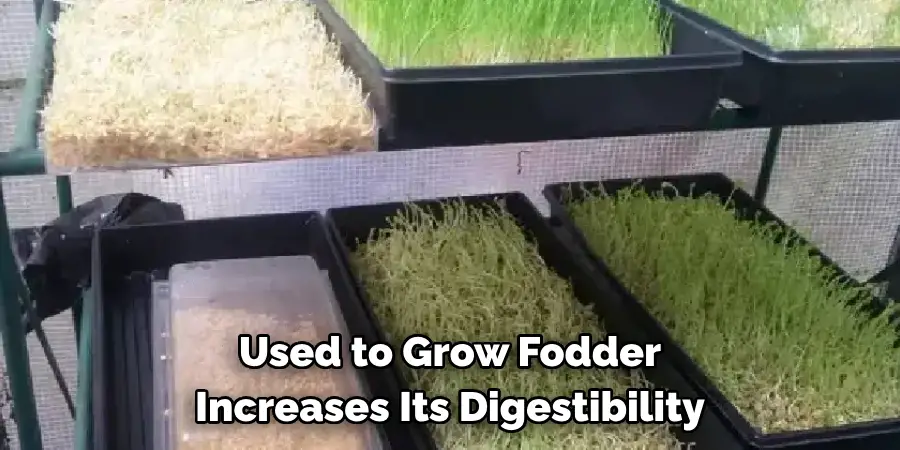
Pests:
Pests, such as gnats or flies, can become a problem when growing fodder. Keep your growing area clean and free of debris to prevent infestations. You can also use natural pest control methods, such as neem oil or diatomaceous earth.
With proper care and attention, you can overcome these common issues and continue to grow healthy and nutritious fodder for your animals. Happy farming! Keep learning and sharing your experiences with others in the farming community to improve the practice of growing fodder for livestock. Together, we can make a positive impact on sustainable agriculture. And don’t forget to enjoy the satisfaction of providing your own animals with fresh and nutritious feed from your very own farm!
Frequently Asked Questions
Q: Can I Use Any Type of Seeds for Growing Fodder?
A: Yes, you can use a variety of seeds such as wheat, barley, oats, corn, and alfalfa. Just make sure they are suitable for your particular livestock and have not been treated with any chemicals or pesticides. The fresher the seeds, the better the germination rate.
Q: How Much Fodder Should I Feed My Animals?
A: The amount of fodder needed will depend on your animals’ nutritional needs and the type of fodder you are growing. It’s best to consult with a veterinarian for specific recommendations, but in general, it is recommended to feed about 2-3% of your animals’ body weight in fodder per day. Start with small amounts and gradually increase to allow them to adjust.
Q: Can I Grow Fodder Year-Round?
A: Yes, you can grow fodder year-round as long as you have a suitable growing space and proper management techniques. However, it may be more challenging in colder climates during winter months. The best approach is to plan ahead and have a rotation system in place to ensure a continuous supply of fresh fodder for your animals.
Q: Can I Feed Fodder to All Types of Livestock?
A: Yes, fodder can be fed to most types of livestock including cattle, horses, goats, sheep, pigs, chickens, rabbits and more. However, it’s important to consult with a veterinarian for specific recommendations for your particular animals.
Q: Is Growing Fodder Cost-Effective?
A: Yes, growing fodder can be a cost-effective option for feeding livestock. It requires minimal equipment and inputs, and the seeds are relatively inexpensive. Additionally, by using your own seeds and reducing reliance on commercial feed, you can save money in the long run.
Conclusion
In conclusion on how to grow fodder, growing fodder is an excellent way to provide nutritious feed for your livestock. It can be done easily and cost-effectively in any climate or space. With the right knowledge and resources, anyone can successfully grow their own fodder.
There are a few key points to keep in mind when starting your own fodder-growing operation. It is important to choose the right seeds, use proper growing techniques, and maintain a clean and controlled environment. Additionally, monitoring and adjusting your system regularly will ensure optimal growth and production.
About
Outdoor Fixes is a distinguished figure in the world of Diy design, with a decade of expertise creating innovative and sustainable Diy solutions.
His professional focus lies in merging traditional craftsmanship with modern manufacturing techniques,
fostering designs that are both practical and environmentally conscious. As the author of diy,
outdoorfixes delves into the art and science of outdoorfixes-making, inspiring artisans and industry professionals alike.
Education RMIT University
(Melbourne, Australia) Associate Degree in Design (Outdoor Fixes) Focus on sustainable design, industry-driven projects,
and practical craftsmanship. Gained hands-on experience with traditional and digital manufacturing tools, such as CAD and CNC software.
Nottingham Trent University
(United Kingdom) Bachelor’s in outdoorfixes.com and Product Design (Honors) Specialized in product design with a focus on blending creativity with production
techniques. Participated in industry projects, working with companies like John Lewis and Vitsoe to gain real-world insights.
Publications and Impact
In diy, Outdoor Fixes his insights on indoor design processes, materials, and strategies for efficient production.
His writing bridges the gap between artisan knowledge and modern industry needs, making it a must-read for both budding designers and seasoned professionals.

